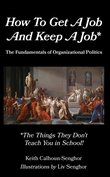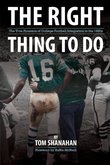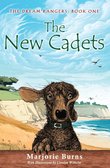
by Jack Lohmann ‧ RELEASE DATE: March 18, 2025
A surprisingly riveting look at the role of death, in life, as illustrated via a single element.
Illuminating the role of death in life.
“We have altered our connection with the earth,” warns science writer Jack Lohmann in his first book, about phosphorus, eons before industrial farming, and after it. Before industrial farming, the element—drawn from waste products like bat guano and carcass bones—was recycled locally by farmers. They used waste from their small farms to fertilize the wide variety of plants they fed their families. They instinctively understood their complex soils, which invariably hosted varieties of microorganisms ferrying life-giving (if immobile) phosphorus to plant roots. So they fertilized with complex local phosphorus mixtures and carefully turned soils over without crushing them (as modern machines do), leaving busy pockets of microbial life. Industrial farming changed all this. Agribusiness mined the earth for huge quantities of phosphate rocks, which made crops grow faster, but reduced both their own diversity and that of their nutrients. The result: farming that hasn’t solved world hunger, and excess phosphorus leaking into rivers and lakes, prompting excessive algae growth, hypoxia, and animal death (eutrophy) in most lakes of Eurasia and North America. Lohmann points out that, for millennia, hunter-gatherers did not die of chronic diseases. He suggests one reason may be their diets of local plants naturally fertilized with complex, recycled local waste. By comparison, for example, in agribusiness-dominated India, which uses massive amounts of mined phosphate fertilizer, half of all crops lack zinc; one-third lack boron, potentially contributing to weak skeletal and immune systems. Happily, worldwide, recognition of the urgent need to return to more balanced local farming practices is growing, Lohmann concludes. We are coming to see that “the soil functions as a living organism that preserves the world of a billion years ago while sustaining lives that will continue far into the future.”
A surprisingly riveting look at the role of death, in life, as illustrated via a single element.Pub Date: March 18, 2025
ISBN: 9780593316610
Page Count: 288
Publisher: Pantheon
Review Posted Online: Dec. 14, 2024
Kirkus Reviews Issue: Jan. 15, 2025
Share your opinion of this book
More About This Book
PERSPECTIVES

by Amy Tan ; illustrated by Amy Tan ‧ RELEASE DATE: April 23, 2024
An ebullient nature lover’s paean to birds.
A charming bird journey with the bestselling author.
In his introduction to Tan’s “nature journal,” David Allen Sibley, the acclaimed ornithologist, nails the spirit of this book: a “collection of delightfully quirky, thoughtful, and personal observations of birds in sketches and words.” For years, Tan has looked out on her California backyard “paradise”—oaks, periwinkle vines, birch, Japanese maple, fuchsia shrubs—observing more than 60 species of birds, and she fashions her findings into delightful and approachable journal excerpts, accompanied by her gorgeous color sketches. As the entries—“a record of my life”—move along, the author becomes more adept at identifying and capturing them with words and pencils. Her first entry is September 16, 2017: Shortly after putting up hummingbird feeders, one of the tiny, delicate creatures landed on her hand and fed. “We have a relationship,” she writes. “I am in love.” By August 2018, her backyard “has become a menagerie of fledglings…all learning to fly.” Day by day, she has continued to learn more about the birds, their activities, and how she should relate to them; she also admits mistakes when they occur. In December 2018, she was excited to observe a Townsend’s Warbler—“Omigod! It’s looking at me. Displeased expression.” Battling pesky squirrels, Tan deployed Hot Pepper Suet to keep them away, and she deterred crows by hanging a fake one upside down. The author also declared war on outdoor cats when she learned they kill more than 1 billion birds per year. In May 2019, she notes that she spends $250 per month on beetle larvae. In June 2019, she confesses “spending more hours a day staring at birds than writing. How can I not?” Her last entry, on December 15, 2022, celebrates when an eating bird pauses, “looks and acknowledges I am there.”
An ebullient nature lover’s paean to birds.Pub Date: April 23, 2024
ISBN: 9780593536131
Page Count: 320
Publisher: Knopf
Review Posted Online: Jan. 19, 2024
Kirkus Reviews Issue: Feb. 15, 2024
Share your opinion of this book
More by Amy Tan
BOOK REVIEW
by Amy Tan
BOOK REVIEW
by Amy Tan
BOOK REVIEW
by Amy Tan
More About This Book
SEEN & HEARD

by Omar El Akkad ‧ RELEASE DATE: Feb. 25, 2025
A philosophically rich critique of state violence and mass apathy.
An Egyptian Canadian journalist writes searchingly of this time of war.
“Rules, conventions, morals, reality itself: all exist so long as their existence is convenient to the preservation of power.” So writes El Akkad, who goes on to state that one of the demands of modern power is that those subject to it must imagine that some group of people somewhere are not fully human. El Akkad’s pointed example is Gaza, the current destruction of which, he writes, is causing millions of people around the world to examine the supposedly rules-governed, democratic West and declare, “I want nothing to do with this.” El Akkad, author of the novel American War (2017), discerns hypocrisy and racism in the West’s defense of Ukraine and what he views as indifference toward the Palestinian people. No stranger to war zones himself—El Akkad was a correspondent in Afghanistan and Iraq—he writes with grim matter-of-factness about murdered children, famine, and the deliberate targeting of civilians. With no love for Zionism lost, he offers an equally harsh critique of Hamas, yet another one of the “entities obsessed with violence as an ethos, brutal in their treatment of minority groups who in their view should not exist, and self-decreed to be the true protectors of an entire religion.” Taking a global view, El Akkad, who lives in the U.S., finds almost every government and society wanting, and not least those, he says, that turn away and pretend not to know, behavior that we’ve seen before and that, in the spirit of his title, will one day be explained away until, in the end, it comes down to “a quiet unheard reckoning in the winter of life between the one who said nothing, did nothing, and their own soul.”
A philosophically rich critique of state violence and mass apathy.Pub Date: Feb. 25, 2025
ISBN: 9780593804148
Page Count: 224
Publisher: Knopf
Review Posted Online: Dec. 14, 2024
Kirkus Reviews Issue: Jan. 15, 2025
Share your opinion of this book
© Copyright 2025 Kirkus Media LLC. All Rights Reserved.
Hey there, book lover.
We’re glad you found a book that interests you!
We can’t wait for you to join Kirkus!
It’s free and takes less than 10 seconds!
Already have an account? Log in.
OR
Trouble signing in? Retrieve credentials.
Welcome Back!
OR
Trouble signing in? Retrieve credentials.
Don’t fret. We’ll find you.





